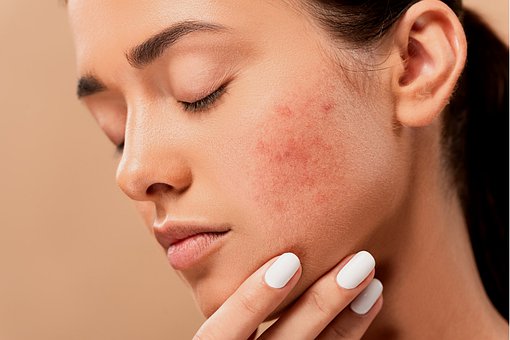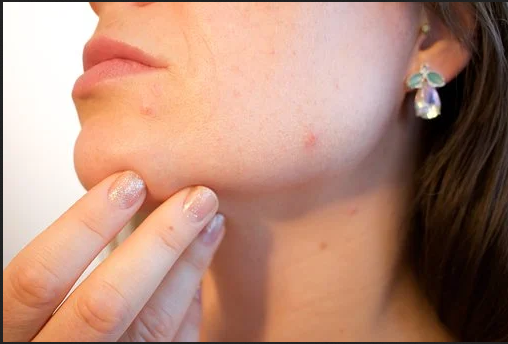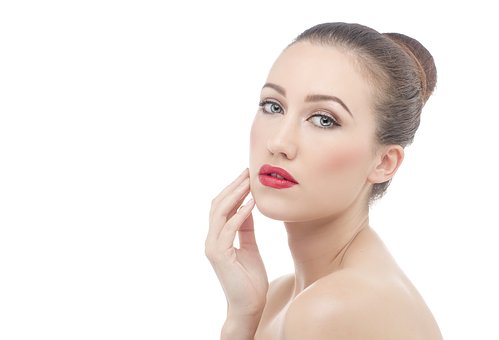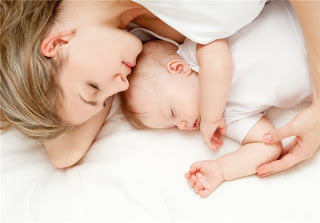If you have ever suffered from acne, you know how stubborn and painful it can be. It can make you feel self-conscious, insecure, or even cause depression. The good news is that it is treatable and that you are not alone in this problem. It is the most common skin condition worldwide. According to studies – 85% of people in the U.S. have suffered from acne at least once, which translates to 50 million Americans a year.

It is natural for acne to occur in puberty, but honestly, it can happen at any age. It affects both males and females. Even though it’s not dangerous it can leave scars and make your life hell if you are a teenager who just wants to fit in and look nice.
If you are curious about acne, or how to treat it, this is the right place for you. You will learn the information you need to know and you will be able to defeat it once and for all.
Acne Types
People often use the term “breakout” for all types of acne, but this isn’t always accurate. The key to success is to identify the type you suffer from, although it’s possible to suffer from multiple types at once. Some cases may be severe and it is highly recommended to visit a dermatologist. It is usually associated with hormones, but there are other factors, such as ingrown hairs, bacteria, dead skin cells, excess production of oil, etc. It’s best not to guess it yourself, but to talk to the specialist. Acne can occur almost everywhere on the skin, but the most typical are face and jawline acne, chest, back, or bikini line acne. Depending on where it is, it can be easier to pin down the causes and get proper treatment. It can be a sign of other medical issues, so make sure you consult with your doctor.

There Are Two Sub-types Of Acne:
Noninflammatory Acne
Noninflammatory acne types are blackheads and whiteheads. They are not that severe, and not very painful, because they aren’t infected by bacteria. Nodular acne, comedones, and papules sometimes also fit this category.
Characteristics:
- Don’t cause swelling
- Respond well to Salicylic acid
- Respond well to OTC (over-the-counter) treatments:
- Hyaluronic acid
- Retinoid/ Retinol
- Vitamin B3
- Wasabi Japonica root extract
- Benzoyl peroxide
- Vitamin C
Blackheads
Blackheads, also known as open comedones, occur when a pore is clogged, but the top of it stays open. It is usually clogged by sebum and dead skin cells. Many people believe that it is dirt that causes the blackhead to turn black, but it’s not true. It is the reflection from clogged hair follicles
Here are some tips on how to remove blackheads and prevent them:
- Wash your face twice a day, and after exercising
- Try pore strips
- Use oil-free sunscreen
- Exfoliate
- Try a clay mask
- Treat yourself with a charcoal mask
- Use topical retinoids
- Apply salicylic acid gels
- Avoid self-tanners
- Avoid benzoyl-peroxide
Whiteheads
They are called closed comedones because the top of the pore literally closes up. They form when a pore gets clogged by dead skin cells and sebum. The fact that the pore is already closed makes it more difficult to treat than blackheads, but there is still a variety of things you can try. Here are some suggestions:
- Use products that contain salicylic acid or topical retinoids
- Get rid of bacteria and excess oil by using Benzoyl peroxide
- Exfoliate, but avoid harsh scrubs
- Wash your face with mild products
- Clean your smartphone, wash your pillow, and sunglasses to get rid of bacteria
- Wash off your makeup every night
- Make sure you use oil-free makeup
- Wash your makeup brushes and sponges regularly
If you wish to try some natural remedies, here are some recommendations:
- Tea tree oil
- Aloe vera
- Vitamin A creams
- Essential oils, such as thyme, cinnamon, rose, and rosemary
- Goat Milk: the lactic acid contained in goat milk can also help reduce acne and irritations as it has anti-bacterial effects. You can use both nourishing creams that contain this ingredient, as well as cleansers and soaps, such as goat milk soap which not only deep cleanses the skin, but will help preserve the natural skin barrier.
Inflammatory acne
Papules
Papules are inflamed lesions. They can appear as small, pink, or reddish bumps. Pores are hardly clogged and they can be tender to touch. What happens is that walls around your pores break down from inflammation. Make sure you don’t pick or squeeze them because it will only make it worse and it may leave scars.
What causes acne papules? According to some studies, common causes are:
- Diet rich in carbohydrates
- Stress
- Hormonal changes
- Overproduction of sebum
- Genetics
How to treat them?
- Benzoyl peroxide
- Salicylic acid
- Topical retinoids
- Oral antibiotics
- Birth-control pills
Prevention tips:
- Follow a daily skin routine
- Use products for your skin type
- Wash your face with a mild cleanser
- Drink at least 2l of water every day
- Apply moisturizer and sunscreen every day

Pustules
Pustules appear as small white bumps that contain fluid, surrounded by red skin. They can grow quite big. The most common places for them are the face, chest, and back. Sometimes they can even form clusters.
They are typically caused by hormonal changes or imbalances in the body, so it is common amongst teenagers and young adults.
Pustules can be very painful and sometimes they develop into cysts. In that case, they should be treated with medication or even surgery in extreme cases.
How to treat them if they are small?
- Wash your face with warm water and mild cleanser, at least twice a day
- Don’t scrub
- Use OTC medications and creams
- Use products that contain peroxide, salicylic acid, or sulfur (never in your genital area)
If the condition isn’t improving, you should probably see a doctor. You may get prescribed for:
- Oral antibiotics (doxycycline or amoxicillin)
- Topical antibiotics (e.g. dapsone)
- Prescription-strength salicylic acid
Nodules
Nodules are large and inflamed. They are very painful and firm to touch because they develop deep in the skin. If you suffer from this type of acne, be sure to visit a dermatologist, since most OTC treatments are not powerful enough against them. They could leave scars, but prescription drugs can be very helpful.
Here are some ways you may treat them:
- Oral antibiotics
- Topical acne medications
- Laser therapy
- Blue light therapy
- Chemical peels
Cysts
Cysts may develop if the pores are clogged by a combination of dead skin cells, sebum, and bacteria. They occur deep in the skin and are extremely painful to touch. They are a result of severe infection and consulting with your doctor is obligatory.
The specialist may prescribe medication Isotretinoin or suggest removing the cyst surgically.

Now you know everything about types of acne and what to do about it. The main thing is to be patient. Try living a healthy lifestyle, eating well, and reducing stress. It’s also important to have a proper skincare routine every day. Acne is a treatable problem, so try not to be too upset about it. Remember that you are beautiful inside and out, no matter what.










